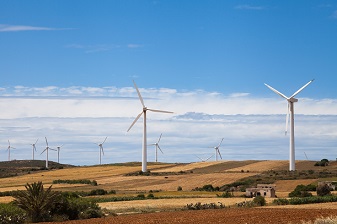
To the credit of every holiday-maker and ambitious hotelier, the green service industry keeps growing. This is fantastic news for the planet and will soon be for our pockets, too, as the costs of environmentally friendly construction and technology plummet.
Behind the scenes, however, is the requirement for accountability. It’s all very well to have eco-friendly roofing and energy-smart panels cladding every building; but is the work going on at the source environmentally friendly? A good way to tell is investment. The markets reflect the demand. What are the trends?
Automation
Probably the big one on everyone’s mind and with good reason, too: automation is on the rise, and some workers are sweating over it, an opinion reflected by Jason Sugarman. The benefit to this is that we’ll see a downturn in the carbon costs of many manufacturing industries; ultimately, automation leads to lower waste as innovation drives the limits of what technology can perform.
It’ll take a fair few years before we see a totally automated, energy efficient world, however, so let’s look at the other trends.
Green Bonds
If you’re not familiar with green bonds, here’s a quick summary: Governments looking to fund wholescale infrastructure change which will, ultimately, alter at some level every task undertaken in that country, even if it’s as simple as the power source coming from renewables.
By issuing green bonds, the governments can fund their projects and provide a great ROI for investors—as high as 12 percent in some places. And it’s big business—Moody’s has estimated an issuance of $120bn green bonds in 2017 so far. With $29.5bn in the first quarter alone—a 75 percent increase compared to last year—these are clearly a lucrative market for investors.
Food Production
Unchecked agriculture is undoubtedly one of the disasters of the last two centuries. Big manufacturers have annihilated entire swathes of priceless rainforest for greenhouse-gas producing pastoral farms. Restaurants have long been proponents of ethical consumption, with large institutions such as JPMorgan Chase heavily investing.
The good news is that in the “backroom”, so to speak, investment is catching up too. A 2015 report by Forbes demonstrated the relationship between smaller, niche green farmers and their predation by bigger corporations. With many now allowing their subsidiaries to maintain their eco-friendly stance, the system is working well.
Carbon Trading
Of all the green markets out there you’re probably least likely to have heard of carbon trading. In case you’re new to this, the carbon trading system encourages the “free trade” of emissions by capping businesses and allowing them to exceed that cap only by buying permits—or selling them. Ambitious and very American, the system has now been adopted by China.
Carbon trading, working on the cap-and-trade principle, is big business. Carbon trading has raised $2.7bn since its inception, with investors encouraged to invest in businesses that can trade their permits off through investment in environmentally friendly, low-carbon solutions.
This is of course, just the tip of the iceberg in green investing, but these are perhaps three of the biggest and most exciting markets out there. The good news is there, though; environmentally friendly business is very much “in”, and investors are reflecting that with the placement of their dollars.






